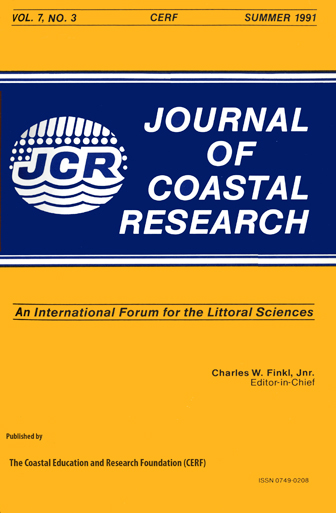Multiple-Bar Morphodynamics and Its Relation to Low-Frequency Edge Waves
Keywords:
Rhythmic topography, beach state model, infragravity waves, edge wave modesAbstract
An analysis of aerial photos from multiple-bar localities in Denmark has revealed the presence of 8 different types of nearshore bar systems. This is the background for the proposal of a tentative beach state model for multiple-bar systems in protected environments. The inner bar displays an evolutionary tendency similar to the bar in the single-bar, oceanic beach state model of WRIGHT and SHORT (1983), while the morphology of outer bars varies according to state. Moreover, outer bars are morphologically and dynamically arrested for long periods of time. Field studies have shown that bar morphology may be very much influenced by infragravity edge waves. During a very intense storm, progressive edge waves occurred, while a less intense storm produced standing edge waves. In both cases a single edge wave mode dominated the energy spectra. Offshore and longshore length scales of this wave corresponded reasonably well with the ensuing bar patterns. In moderate energy situations, standing edge waves also occurred, However, in those cases the waves had a higher frequency and a lower mode number, probably producing the smaller-scale rhythmicity of the inner bar. Outer bars thus only respond to the most highly energetic conditions, while the more mobile inner bar has a lower energy threshold.


